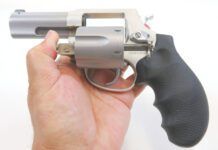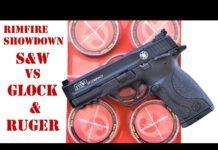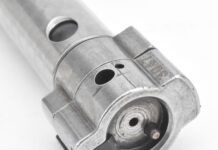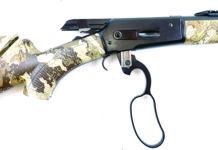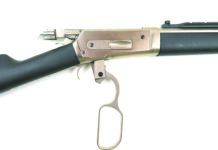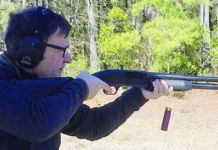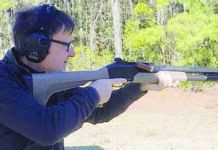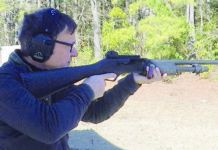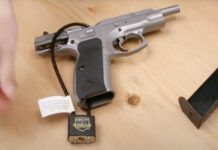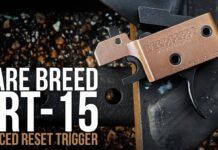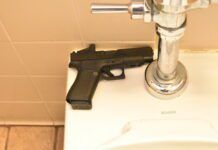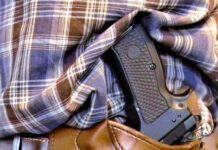Cold bluing, or chemical bluing, is used to touch-up slightly worn or nicked blued finishes. It is suitable for covering up the holster wear on the muzzle of a revolver, or a spot on a slide where your sweat lifted the blue. It is not nearly as durable as a hot-dip blue finish. Some cold-blue formulas contain sulfides, and a handgun that has been touched-up too much can have a very alight, but noticeable, smell of rotten eggs. Sniffing a used firearm, to see if there has been any use of cold blue to hide wear, is an old trick in the gun business.
My standard cold-blue solution is Brownells Oxpho-blue. It gives a reasonably durable finish and can be applied repeatedly until the color is dark enough to match the existing finish. To use a cold-blue solution, first scrub the area to be blued with 0000 steel wool and light oil. Clean the surface of powder residue, mild oxidation and any pre-existing finish that is ready to lift off. Obviously, you don’t cold blue a handgun with a plated surface, or a stainless steel handgun. Clamp the handgun in a padded vise, and bring your work lamp close to the surface. Use the lamp to warm the area you’re working. With a cotton swab, brush the Oxph-blue onto the steel. Leave it on the surface for a minute, and then polish with dry 0000 steel wool. Degrease, and apply the Oxpho-blue again. Repeat until you get the color you want. Oil the surface to finish the process.
For more advice and techniques for smithing your pistols and revolvers, purchase Gunsmithing Pistols and Revolvers from Gun Tests.


